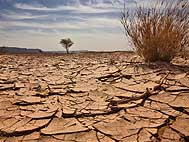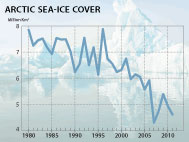| SEARCH |
-

Nov 17, 2015
Reflections on a three-decade legacy
The International Geosphere-Biosphere Programme (IGBP) will come to a close at t...
-
Nov 17, 2015
Use of and access to content on this website
Text and images produced by IGBP in house are free to use with appropriate credi...
-
Nov 12, 2015
Bella Gaia performance and panel discussion to mark IGBP's closure
A musical performance by Bella Gaia will celebrate the achievements and legacy o...
-

Towards Future Earth:
evolution or revolution?
During its three decades of existence, the International Geosphere-Biosphere Pro...
-
A personal note on IGBP and the social sciences
Humans are an integral component of the Earth system as conceptualised by IGBP. João Morais recalls key milestones in IGBP’s engagement with the social sciences and offers some words of advice for Future Earth.
-
IGBP and Earth observation:
a co-evolution
The iconic images of Earth beamed back by the earliest spacecraft helped to galvanise interest in our planet’s environment. The subsequent evolution and development of satellites for Earth observation has been intricately linked with that of IGBP and other global-change research programmes, write Jack Kaye and Cat Downy .
-
Deltas at risk
Around 500 million people worldwide live on deltas, but many of the world's deltas are sinking due ...
-
Climate change: the state of the science
A new data visualization released on the first day of the plenary negotiations at the UNFCCC’s clima...
-
Climate Change:
the State of the Science
Videos now online from the Stockholm public forum to mark the launch of the IPCC's climate report, 2...

Blue skies: a homage to fundamental research
JRC website
Hard copies are freely available while stocks last.
Email:
JRC-H07-SEC@ec.europa.eu
Raes book, Air & Climate: Conversations about molecules and planets, captures a series of interviews with some of the world’s most influential atmospheric researchers. Between 2009 and 2011, in quiet moments snatched between talks at science conferences and en route to airports, Raes recorded candid conversations with Paul Crutzen, James Hansen, Mario Molina, Sir John Houghton, John Schellnhuber, Veerabhadran Ramanathan, Anton Eliassen and C.S. Kiang.
Each academic tells his own remarkable story, from early upbringing to major discoveries, Nobel prizes and life in the policy and media spotlights.
These are the people who linked CFCs to stratospheric ozone destruction, who grasped the full implications of climate change, identified greenhouse gases beyond carbon dioxide and tracked long-range pollutants. From their work emerged the new discipline of Earth-system science. Paul Crutzen and John Schellnhuber were members of IGBP's Scientific Committee and had a profound influence on its direction.
Raes explained, “At a certain moment I realised I was in contact with all these people and that they inspired me. Inspired, not about how to tackle specific issues in our research, but more about how to be a responsible scientist, standing with both feet within society. I wanted to share that inspiration.”
Some common threads emerge from the book, published by the Joint Research Centre (JRC) of the European Commission where Raes is head of the Climate Risk Management Unit. For example Swedish academic Bert Bolin appears several times. Bolin, who died in 2007, was a major figure in international research and is often credited with spearheading the Intergovernmental Panel on Climate Change (IPCC), the World Climate Research Programme and IGBP.
Another common theme was the difficulty breaking through the barrier between science and society, though the rewards for some were substantial. Sir John Houghton, chair of IPCC Working Group One (1988-2002), described it as one of the greatest experiences of his life. But all interviewees faced frustration at the difficulties convincing the world to sit up and listen. How do you explain that “invisible gases are attacking an invisible layer high up in the atmosphere that shields us from invisible rays,” opined Mario Molina.
Raes book gives a brief glimpse into the creative minds of the greatest scientists; people who can persist with problems long after everyone else has packed up and gone home. Paul Crutzen remarked that you need “total concentration on the subject. You wake up and go to bed thinking about it. Early morning hours can be especially productive.”
Few of the researchers had any inkling their research would be particularly relevant to society at the beginning of their journey. But once they realized, they felt there was no other way than reaching out until their findings became common knowledge. This wonderful book shows time and time again the unexpected value -- to our entire civilisation -- of basic research in environmental sciences. As the global-change programmes morph into Future Earth – a programme focusing on solutions - this message comes at an important time.
Owen Gaffney

IGBP closed at the end of 2015. This website is no longer updated.
-

Global Change Magazine No. 84
This final issue of the magazine takes stock of IGBP’s scientific and institutional accomplishments as well as its contributions to policy and capacity building. It features interviews of several past...
-

Global Change Magazine No. 83
This issue features a special section on carbon. You can read about peak greenhouse-gas emissions in China, the mitigation of black carbon emissions and the effect of the 2010-2011 La Niña event on gl...
-
INTERGOVERNMENTAL PANEL ON CLIMATE CHANGE:
How green is my future?
UN panel foresees big growth in renewable energy, but policies will dictate just how big.
-
UK:
'The Anthropocene: a new epoch of geological time?'
Royal Society, Philosphical Transactions A





















